Hammers Guide
Weight
The weight of a hammer can greatly affect its performance and usability for different tasks. For lighter applications such as driving nails into delicate materials like drywall or assembling furniture, a lighter hammer between 8-16 ounces would be ideal. The Stanley STHT51304 12 Oz Curve Claw® Fiberglass Hammer is a great option in this category, as it combines a lightweight design with a durable fiberglass handle to provide maximum control and minimal fatigue.
On the other hand, for heavy-duty tasks like demolition or construction work, a heavier hammer between 20-32 ounces would be more suitable. The Estwing E3-20S 20 Oz Straight Claw Hammer with Metal Handle is a popular choice in this segment, thanks to its solid steel construction and balanced weight, allowing for powerful strikes without compromising control.
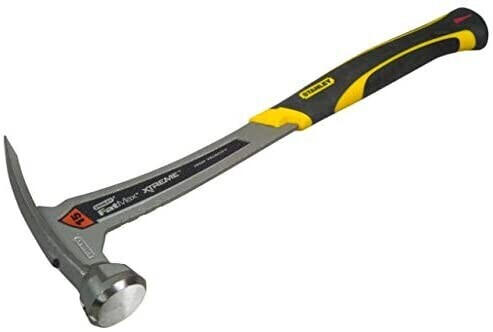
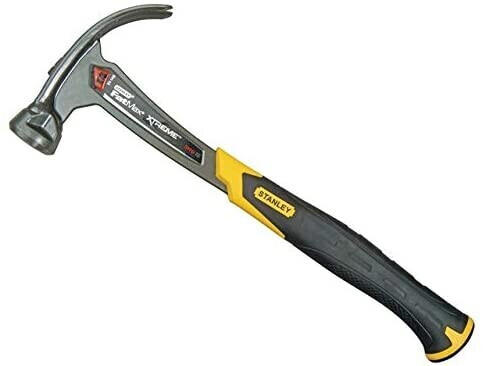
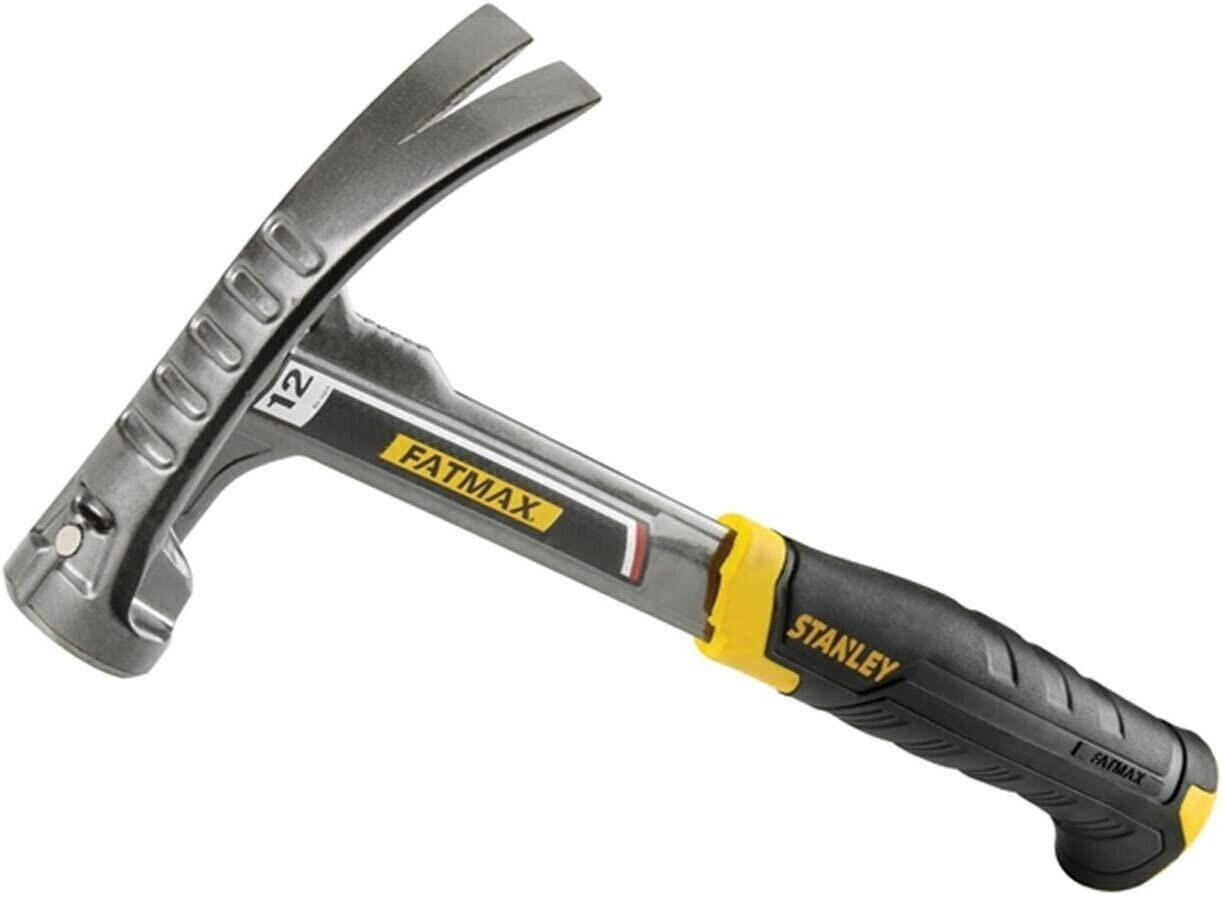
Remember, the weight of a hammer should match the intended use to ensure comfort, precision, and effectiveness in completing your intended tasks.
Handle length
The length of the handle directly affects both the balance and the amount of force you can generate with each swing. Typically, hammers come in three handle lengths: short, medium, and long.
Short handle hammers, such as the Stanley STHT51702 16 oz Rip Claw Fiberglass Hammer, are great for close-quarter work and wielders with limited swinging space. These hammers are lightweight and ideal for precision tasks like delicate carpentry or trim work.
Medium handle hammers, like the Estwing E3-16C 16 oz Curved Claw Hammer, offer a good balance between maneuverability and force. These hammers are suitable for general purpose use and provide enough leverage for most DIY tasks around the house.
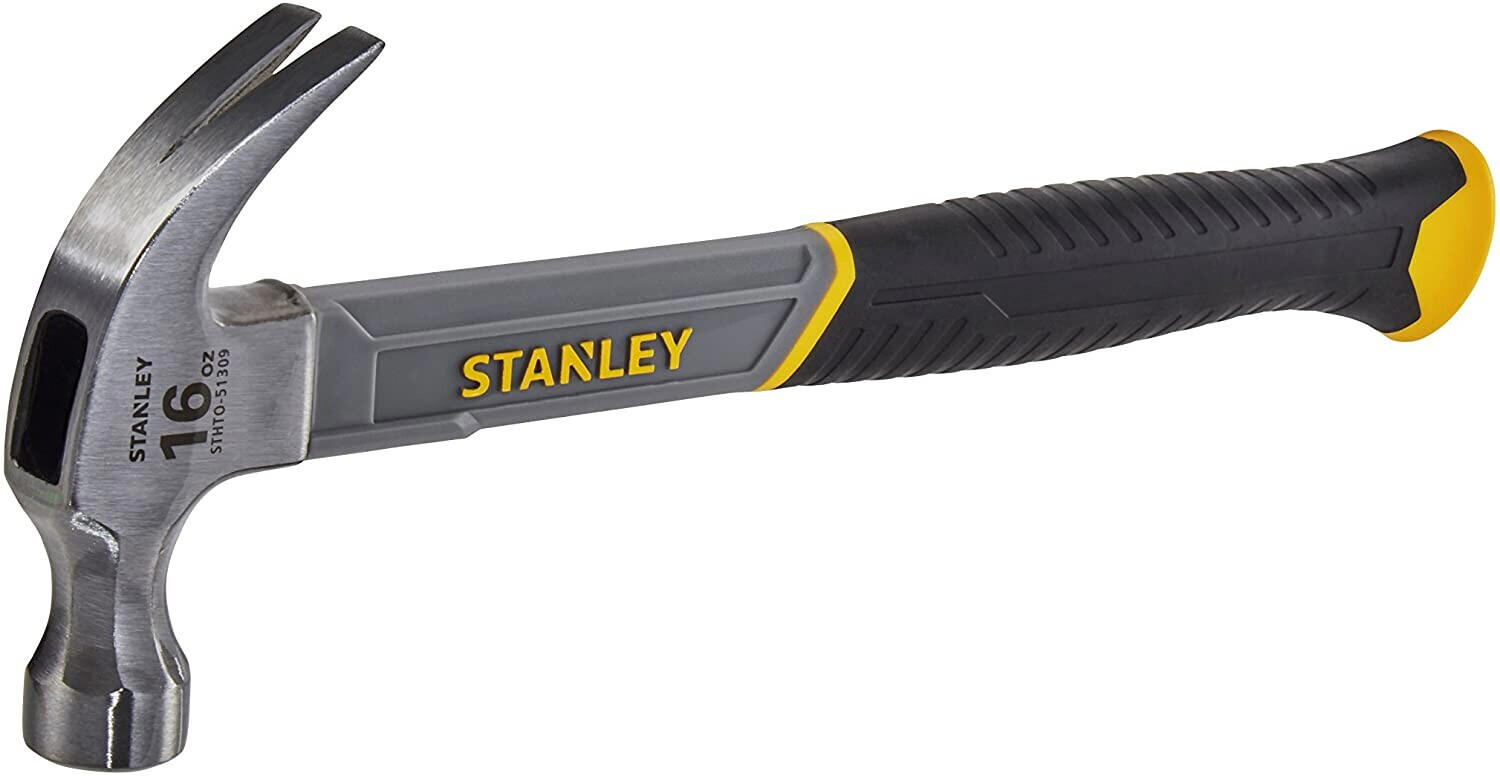
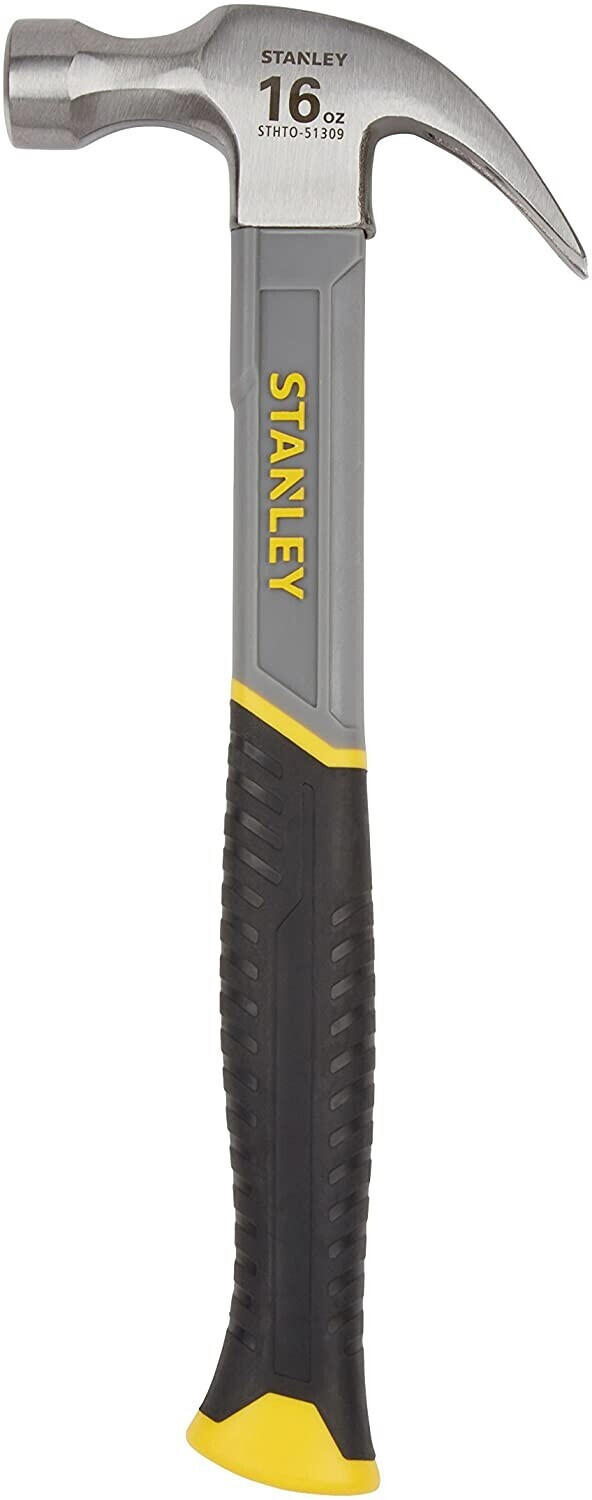
Long handle hammers, such as the renowned Stiletto TI14SS 14 oz Titanium Smooth Face Hammer, are designed for heavy-duty jobs and users who require maximum striking power. With longer handles, these hammers allow for greater swing arc, enabling more force to be delivered with each blow.
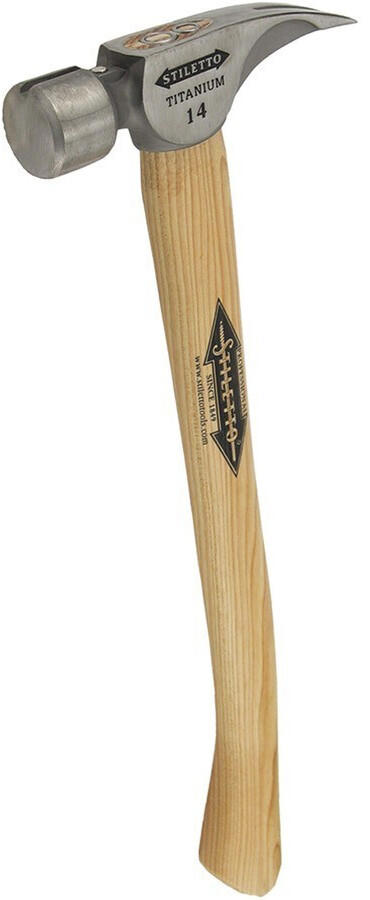

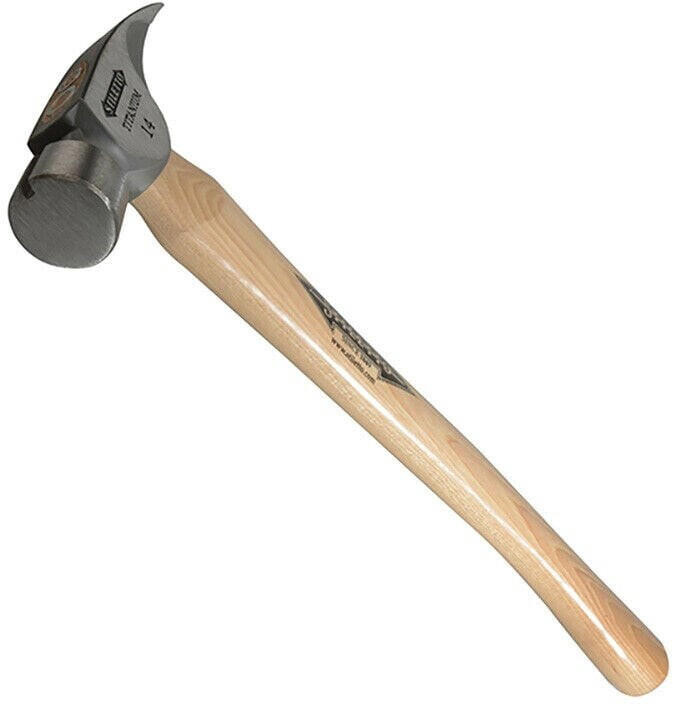
Grip material
The grip is crucial for allowing a comfortable and secure hold while using the hammer. Different materials offer varying levels of comfort and durability. One popular choice for hammer grips is rubber, which provides a cushioned grip for reduced fatigue during extended use. The Estwing 16oz Rubber Mallet is an excellent example of a hammer with a rubber grip that offers both comfort and durability. Another option is a fiberglass handle with a rubber grip, such as the Stanley FATMAX Fiberglass Claw Hammer. The combination of the fiberglass handle and rubber grip provides added strength and shock-absorption, making it an ideal choice for heavy-duty tasks.
Head weight
The weight of the hammerhead affects the force and impact it delivers, as well as the control and accuracy that can be achieved. For light-duty applications, a hammer with a smaller head weight, such as the 8-ounce Estwing Sure Strike Curved Claw Hammer, is suitable. This hammer features a forged steel head and a fiberglass handle for durability and reduced vibration. For medium-duty tasks, a hammer with a slightly higher head weight is recommended, such as the 16-ounce Stanley FatMax AntiVibe Nailing Hammer. It offers a larger striking surface, an anti-vibration grip, and a forged steel head. In heavy-duty scenarios, a heavier hammer with a larger head weight, like the DeWalt DWHT51432 19-ounce Rip Claw Hammer, ensures powerful strikes and efficient results. This hammer has a steel core handle and shock reduction grip, providing added comfort and durability. Remember to choose the head weight that suits your specific needs to optimize your hammering experience.
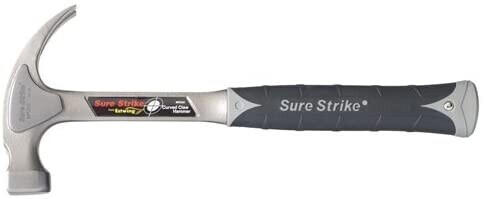
Head shape
Different head shapes offer varying degrees of versatility and functionality. The claw-shaped head is commonly found in hammers like Stanley 51-167 22-Ounce FatMax Xtreme AntiVibe Rip Claw Framing Hammer, which is designed for prying and nail pulling. The rounded dome-shaped head, as seen in the Estwing E3-16S 16 oz Straight Claw Hammer, is ideal for driving nails into hard surfaces. This shape allows for increased precision and control. Another option is the cross-peen or ball-peen head, like that of the Vaughan CF1HC 22-Ounce California Framer Milled Face Hammer. These hammers are great for shaping and smoothing metal, making them popular among blacksmiths and metalworkers. Overall, choosing the right head shape is crucial to ensure you have a hammer that suits your specific needs.
Head material
Different materials offer varying levels of durability, power, and versatility for different applications. For example, steel-headed hammers are known for their strength and durability, making them ideal for heavy-duty tasks such as demolition or driving nails into tough materials. Some popular steel-headed hammers on the market include the Estwing Sure Strike Hammer and the Stanley FatMax Xtreme Hammer.
In addition to steel, another common material for hammer heads is titanium. Titanium-headed hammers are known for being lightweight yet strong, providing power with reduced recoil. These hammers are excellent for precision work and for tasks that require speed and accuracy, such as framing or finish carpentry. An example of a titanium-headed hammer is the Stiletto Tools Titanium Hammer.

Considering the head material is crucial in ensuring you select a hammer that suits your specific needs and applications, whether it be for heavy-duty tasks or precision work.
Face type (smooth, textured, waffled)
The face of the hammer determines the type of impact it will have on the surface you are working on. There are three main types of face textures: smooth, textured, and waffled.
Smooth-faced hammers, such as the Estwing E3-20C Solid Steel 20 Oz. Chisel Edge Rock Pick with Pointed Tip provide a clean and damage-free strike, making them ideal for delicate or finished surfaces. These hammers are often used by carpenters and cabinetmakers who require precision.
Textured-faced hammers, like the Stanley 51-167 22-Ounce FatMax Xtreme AntiVibe Rip Claw Framing Hammer, have small waffle-like patterns on the face. The textured surface helps provide grip and prevents slippage during usage. These hammers are commonly used in construction and woodworking.
Waffled-faced hammers, such as the Vaughan SF6 Soft-Face 6-Ounce Mallet, have a larger and more pronounced waffle pattern. This design is ideal for driving fasteners or striking chisels, delivering maximum force while minimizing the risk of surface damage. These hammers are frequently used by mechanics and metalworkers.
By considering the face type of a hammer, you can ensure you select the best tool for your specific task, whether it's precision work, construction, or something in between.
Claw type (curved, straight)
Claws can be categorized into two main types: curved and straight. Curved claws are designed to provide better leverage when prying or removing nails. They have a contoured curve that helps to grasp nails firmly, making it easier to pull them out without damaging the surrounding materials. For those who prioritize versatility and utility, a curved claw hammer like the Estwing E3-16C 16 oz Curved Claw Hammer is a great option. It features a forged steel head for strength and durability, a shock-absorbing handle to reduce vibrations, and a fine-toothed curved claw that ensures a secure grip on nails.
On the other hand, straight claw hammers are favored by professionals who primarily use hammers for demolition or framing tasks. They have a straight, flat claw that excels at prying and ripping materials apart. The straight claw allows for increased leverage and precision when removing nails or dismantling structures. For those seeking a reliable straight claw hammer, the Stanley FMHT51297 FatMax Claw Hammer is worth considering. With its heat-treated and rim-tempered head, it provides both durability and a concentrated striking force for efficient nail removal and general carpentry tasks.
In conclusion, when it comes to the claw type of hammers, the choice boils down to personal preference and the intended applications. Curved claws are best suited for general use and nail removal, while straight claws excel at prying and demolition tasks.
Claw size
The claw, also known as the curved end of the hammer's head, is used for pulling out nails and prying objects. Larger claws provide more leverage and strength, making them ideal for heavy-duty tasks and construction projects. For those seeking maximum power, the Estwing E3-28S is a great choice as it features a 13.5-inch steel handle and a sizeable claw for efficient nail pulling. If you're looking for a more versatile option, the Stanley 51-106 offers a 10-inch curved claw that strikes a balance between pry strength and portability; it is suitable for both DIY enthusiasts and professionals. For those with small-to-medium scale projects that require precision, the Stiletto Tools TB15MS is an excellent pick. Its smooth 15 oz titanium head holds a small but efficient claw that is perfect for detailed work in tight spaces.

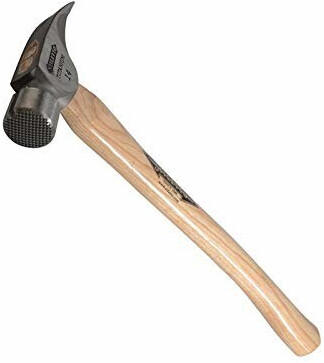
Hammer size
Hammer size refers to the weight of the head, and it is important to choose the right size for the task at hand. If you are undertaking light-duty tasks such as hanging pictures or assembling furniture, a small hammer with a head size of 8 to 12 ounces would be suitable. The Stanley STHT51512 Fiberglass Hammer fits this category, weighing a lightweight 12 ounces with a comfortable fiberglass handle.
For general purpose use, a medium-sized hammer with a head size ranging from 16 to 20 ounces provides a good balance of power and control. The Estwing E3-16C Curve Claw Hammer is an excellent choice, featuring a 16-ounce head made of tempered steel for enhanced durability and a leather grip handle for comfortable use.
If you are tackling heavier projects that require more force, such as framing or demolition work, a larger hammer with a head size of 20 to 28 ounces is recommended. The Vaughan 7180 Titanium Rip Hammer exemplifies a heavy-duty hammer, weighing in at 24 ounces with a titanium head for maximum impact strength and a hickory handle for shock absorption during use.
Different segments of hammers are available to cater to specific tasks. For example, ball-peen hammers are ideal for metalworking, and products like the Tekton 30812 Double-Faced Soft Mallet with a 32-ounce head stand out in this category. Similarly, sledgehammers, such as the WilFiks Heavy Duty Sledge Hammer, are specifically designed for powerful impact force and come in various sizes, with the 10-pound option being ideal for demolition work. Overall, selecting the appropriate hammer size ensures greater efficiency and success in completing your desired tasks.
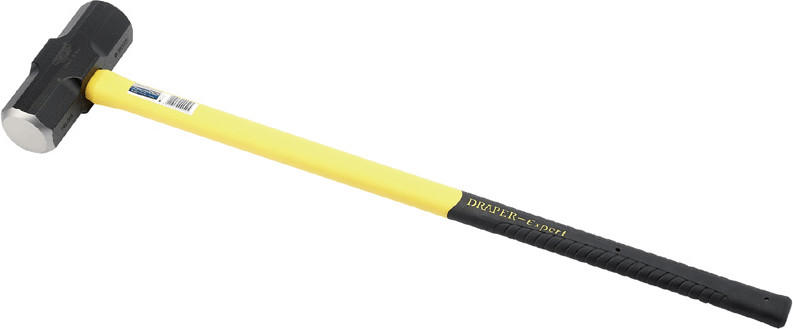
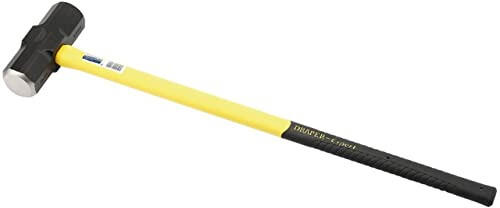
Anti-vibration feature
This feature helps to minimize the impact and strain on your hands and arms, reducing the risk of hand-arm vibrations and potential injuries. One example of a hammer with excellent anti-vibration properties is the Stanley FATMAX Anti-Vibe Rip Claw Hammer. This hammer is specifically designed with an Anti-Vibe handle that helps to dampen vibrations, ensuring a more comfortable and safer experience. Another option to consider is the Estwing Sure Strike California Framing Hammer. This hammer features a shock-absorbing grip, which reduces vibrations caused by impact, resulting in less fatigue and greater control during use. Both of these hammers are ideal choices for those who are concerned about the potential negative effects of excessive vibration.
Handle grip pattern
This plays a crucial role in providing comfort, reducing hand fatigue, and ensuring a secure grip. There are various handle grip patterns available in the market, each with its own benefits.
One popular handle grip pattern is the anti-slip rubber grip. Hammers with this grip pattern are designed to provide excellent control and reduce vibration. The rubber material not only enhances grip but also absorbs shock, making them ideal for prolonged use. Examples of hammers with anti-slip rubber grip include the Stanley STHT51512 16 oz Fiberglass Hammer and the Estwing BIG BLUE Framing Hammer with Shock Reduction Grip E6-HM.
Another handle grip pattern you may come across is the textured, non-slip grip. Hammers with this design feature textured patterns that prevent slipping even in wet or oily conditions. A great example of a textured, non-slip grip hammer is the DEWALT DWHT51026 20 oz Rip Claw Hammer that combines a checker face design with a unique color-coded handle to provide a secure grip and ease of identification on construction sites.
When considering handle grip patterns for hammers, it is important to choose one that suits your needs and preferences to ensure optimal comfort and control during use.
Handle material
The handle of the hammer plays a crucial role in providing comfort, control, and durability. There are various handle materials available in the market such as wood, fiberglass, and steel.
Wooden handles are often made from robust hickory or ash, known for their strength and shock absorption. They are comfortable to grip and offer excellent control. A great example of a hammer with a wooden handle is the Estwing Sure Strike Hammer, which features a genuine hickory handle and a forged steel head for durability.
Fiberglass handles are lightweight, strong, and resistant to moisture, making them ideal for heavy-duty professional use. A recommended option in this category is the Stanley Fiberglass Hammer, which boasts a high-density, fiberglass-reinforced handle for strength and durability.
Steel handles, like those found in some framing hammers, are incredibly sturdy and can handle heavy impacts. The Dewalt Steel Framing Hammer is highly regarded for its solid steel handle, optimized weight distribution, and comfortable grip for extended use.

Remember, when choosing a hammer, considering the handle material is crucial as it impacts the hammer's overall performance and longevity.
Handle durability
The handle is a critical component of a hammer as it affects its overall performance and longevity. Look for hammers with handles made from high-quality materials such as fiberglass or steel. Fiberglass handles are known for their strength and resilience, resisting impact and providing a comfortable grip. For example, the Estwing Sure Strike Drilling/Crack Hammer with Fiberglass Handle features a durable and lightweight fiberglass handle that is designed to reduce shock vibrations during use. Another option is the Stanley Fiberglass Rip Claw Hammer, which has a high visibility fiberglass handle and an ergonomic grip for improved control and reduced hand fatigue. By choosing a hammer with a durable handle, you can ensure that it withstands heavy usage and lasts for years to come.


Handle shape
The handle of a hammer plays a crucial role in providing a comfortable grip and reducing fatigue during use. There are several handle shapes available in the market, each offering different advantages. A straight handle offers a traditional and balanced feel, suitable for general purpose use. An example of a straight handle hammer is the 'Stanley FatMax Antivibe Rip Claw Nailing Hammer', featuring a fiberglass handle that helps reduce vibration. Another option is a curved handle, which is ergonomically designed to fit the natural shape of the hand. One such hammer is the 'Estwing E3-22SM Mason's Hammer' with a curved 20-ounce head and a leather-wrapped curved handle for superior grip and comfort. Ultimately, the choice of handle shape depends on personal preference and the type of work being done.
Ergonomics
A hammer that is comfortable to hold and use can greatly improve your productivity and reduce strain on your body. Look for hammers with a comfortable grip or handle that provides a secure hold. One example, the Estwing E3-16S 16 oz. Straight Claw Hammer, features a specially designed grip that reduces shock and vibration while providing a comfortable fit for your hand. Another option is the Stiletto TI14MC 14 oz. Titanium Milled/Curved Face Hammer, which is renowned for its lightweight and comfortable construction, reducing fatigue over time. Ergonomics can vary across different types of hammers, such as claw hammers, framing hammers, or ball peen hammers, so make sure to consider the specific characteristics you need for your intended use.
Balance
A well-balanced hammer will provide the user with better control, less vibration, and reduce the risk of fatigue during use. It is crucial to look for hammers that evenly distribute the weight between the head and the handle.
For example, the Estwing Sure Strike Drilling/Crack Hammer is a great option. It has a forged steel head and a shock-absorbing handle, ensuring optimal balance. Another option is the Stanley Fatmax Anti-Vibe Blacksmith Hammer, which features an anti-vibration handle design for reduced fatigue and increased balance. In terms of larger hammers, the Wilton BASH Brass Hammer is a professional-grade choice that offers balance and versatility in a single tool.
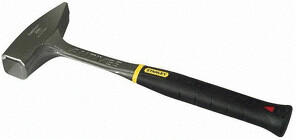
When considering the Vaughan Shingling Hatchet or the Stiletto Fiberglass Mini Framing Hammer, users can also find a suitable balanced hammer for specific applications within those categories.
Hammer length
The length of the hammer handles can vary, ranging from as short as 9 inches to as long as 16 inches. The length of the hammer handle affects the leverage and control that a user has over the hammer, as well as the force delivered to the striking surface.
For general-purpose tasks and small-scale projects, hammers with shorter handles, such as the Estwing 16 oz Curved Claw Hammer with a 13-inch handle, provide better control for precise work and are easier to handle for individuals with smaller hands. On the other hand, for heavier-duty tasks such as framing or demolition work, hammers with longer handles like the Stanley FatMax Xtreme AntiVibe Rip Claw Hammer with an extended 15-inch handle provide increased leverage and deliver more power with each strike. Longer handle hammers also allow for better reach and can help reduce user fatigue during prolonged use. However, it's important to select a hammer length that feels comfortable and suits the specific tasks at hand.
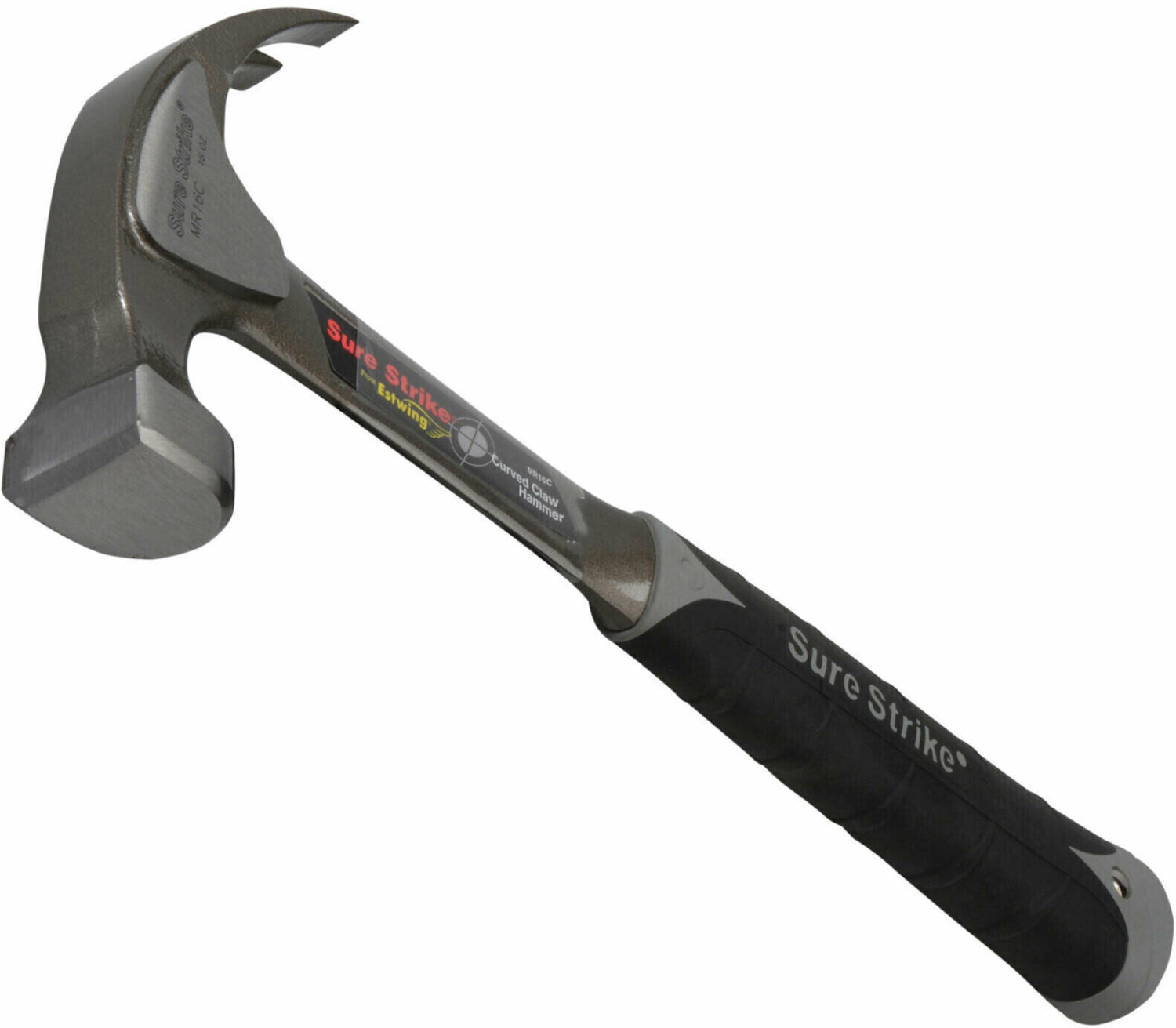

Hammer width
The width of the hammer head determines the area of contact, which in turn affects the force exerted on the target material. Smaller width hammers are ideal for small and delicate tasks that require precision, such as driving in small nails or tapping delicate surfaces. For example, the Estwing E3-12C Curved Claw Hammer with a width of 1 inch is perfect for these tasks. On the other hand, larger width hammers are designed for heavy-duty tasks that require more force, such as demolition or framing. The Stanley FMHT51304 FatMax 22-Ounce Checkered Face Framing Hammer with a width of 1.62 inches is great for heavy-duty applications and provides exceptional power and leverage.
In terms of availability and pricing, hammer width can be categorized into budget, mid-range, and high-end segments. In the budget segment, choices like the TEKTON 30123 Jacketed Fiberglass Claw Hammer with a width of 0.5 inches are suitable for everyday household tasks without breaking the bank. In the mid-range, options like the DEWALT DWHT51054 20 Oz Rip Claw Hammer with a width of 1.22 inches strike a balance between quality and affordability, suitable for general use. For professional use, hammers in the high-end segment like the Vaughan 575-20 Stealth Rip Hammer with a width of 1.5 inches deliver superior performance and durability.
Magnetic nail holder
A magnetic nail holder is a convenient tool that helps you securely hold nails in place while you hammer them, making it easier to work without needing an extra hand to hold the nails. One popular hammer on the market that offers this feature is the Estwing 22 oz. Milled Face Framing Hammer. This hammer is equipped with a magnetic nail starter in the head of the tool, allowing you to easily and quickly start nails with one hand. Another option to consider is the Stiletto Tools Titanium Milled Curved Hickory Handle Hammer. This hammer also has a magnetic nail holder feature and boasts a lightweight titanium head, making it easier to swing and reducing fatigue during extended use. These hammers are both excellent choices if a magnetic nail holder is an important feature for your needs.
Nail starter
A hammer with a nail starter makes it easier to drive in nails by providing a small groove or magnetized area to hold the nail in place, allowing for more accurate and controlled strikes. One example of a hammer with a nail starter is the Estwing Sure Strike Hammer. With its magnetic nail slot, it allows for efficient nail start and limited slippage. Another option is the Stanley FatMax Xtreme AntiVibe Rip Claw Nailing Hammer, which features a magnetic nail groove, offering increased precision and reducing the risk of mishits. It also comes with an anti-vibration grip for added comfort during extended use. These hammers are ideal for individuals who frequently work with nails and need an easier and more efficient way to start them.
Repelling magnetic field
This feature is particularly useful for individuals who work with electrical equipment or materials that are sensitive to magnetism. An example of a hammer that excels in repelling magnetic fields is the Estwing E3-20s 20 oz Straight Claw Hammer. It is made with a solid steel construction, which not only provides durability but also allows for a completely non-magnetic design. Additionally, the Stiletto Tools TB15MS TiBone Mini-14 oz Titanium Milled-face Hammer is another excellent option. Featuring a titanium head, this hammer offers superior strength and is completely non-magnetic due to its material composition. Both of these hammers are ideal choices for individuals seeking the best and right tool that repels magnetic fields.
Mirrored striking face
A mirrored striking face ensures a clean and precise contact with the target, minimizing the risk of glancing hits or missed strikes. Two examples of hammers that have a mirrored striking face are 'Estwing E3-22SM' and 'TEKTON 31303 Jacketed Fiberglass Sledge Hammer'.
The 'Estwing E3-22SM' hammer features a smooth, mirror polished striking face that helps deliver a powerful and accurate strike. It also boasts a nylon-vinyl grip that provides comfortable handling during use. Similarly, the 'TEKTON 31303 Jacketed Fiberglass Sledge Hammer' has a mirrored striking face with precise edges for improved aim. This sledge hammer combines a mirrored face with a shock-absorbing, fiberglass handle for maximum impact control. By considering hammers with a mirrored striking face like these, you can ensure accurate and efficient strikes in your projects.

Customizable handle
A customizable handle allows you to adjust the length or grip style to suit your specific needs and preferences, providing a more comfortable and secure grip while reducing hand fatigue. One product that offers a customizable handle option is the Estwing Sure Strike 16 oz. Fiberglass Claw Hammer. It features a fiberglass handle that can be easily customized by using a heat-resistant adhesive to attach various grip materials such as rubber or cork, allowing you to create the perfect grip for your comfort. Another great option is the Stiletto 14 oz. Titanium Smooth Face Hammer with 18 in. Curved Hickory Handle. This hammer's handle can be shortened by cutting it to the desired length, enabling you to achieve a more precise and controlled swing.
Anti-slip grip
An anti-slip grip provides stability and comfort, ensuring that the hammer doesn't slip from your hand during use. Look for hammers that feature a rubber or textured grip that provides a firm and secure hold. One example of a hammer with an excellent anti-slip grip is the STANLEY FatMax Antivibe Hammer. It features a patented torsion control grip that reduces the effects of torque on wrists and elbows, offering users better control and minimizing the risk of slippage. Another option is the Estwing Sure Strike Hammer, which boasts a molded D-handle grip that provides a comfortable and non-slip hold, allowing for better precision and control while working. Remember, a reliable anti-slip grip is essential for ensuring your safety and achieving accurate results in your hammering tasks.
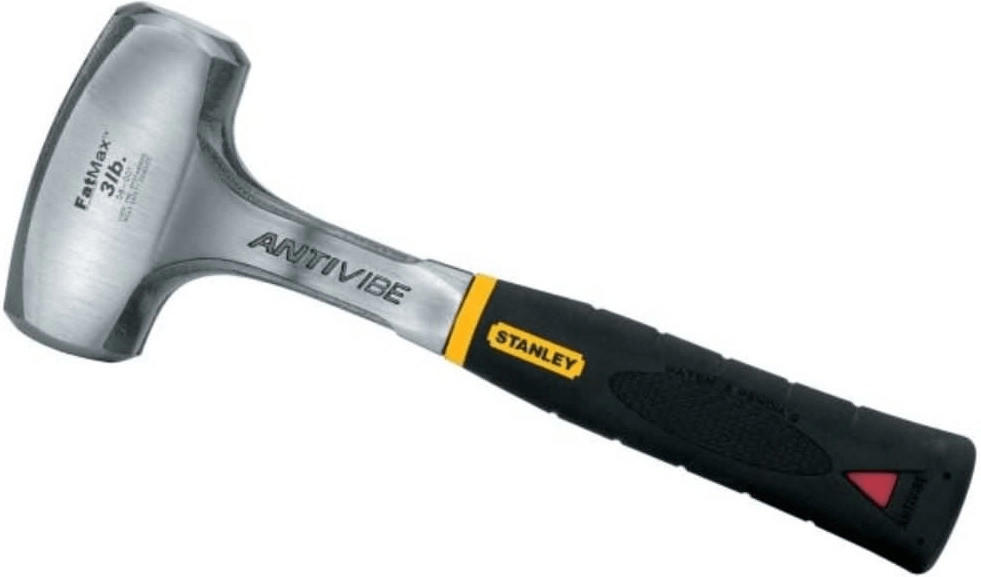

Replaceable face/cap
This feature allows you to easily replace the face of the hammer when it becomes worn or damaged, extending the lifespan of the tool and saving you money in the long run. One example of a hammer with a replaceable face is the Estwing Sure Strike Hammer. It features a forged steel head with a replaceable nylon face, which is great for those who work with delicate materials that require a softer impact. Another option is the Dead On Tools Exhumer-Exhumercap6 hammer that offers six interchangeable faces, including a standard smooth face, a curved driving face, and various textured faces for specific applications. These options provide versatility and allow you to customize the hammer to suit your specific needs.
One-piece construction
One-piece construction is a key feature that ensures durability and functionality of the hammer. This means that the head and handle of the hammer are forged or molded together as a solid piece, eliminating the risk of breakage at the connection point. One great example of a hammer with one-piece construction is the Estwing E3-16C Claw Hammer. It features a steel forged construction, providing strength and durability. Another option is the Stanley STHT51246 20-ounce Steel Checkered Face Hammer, which also boasts one-piece construction for maximum reliability. These hammers are ideal for heavy-duty tasks and can withstand the pressure and impact without compromising their performance.
Corrosion resistance
This is particularly important if you work in environments where the hammer may come into contact with moisture, chemicals, or acidic substances. In this case, you want a hammer made from materials that are resistant to rust and corrosion. One example of a hammer that excels in this area is the Estwing E3-16C, which features a double-tempered steel head that not only provides strength and durability but also resists corrosion even in harsh conditions. Another option is the Stanley FMHT56008, which is constructed with a fiberglass core and an anti-vibe handle to reduce vibrations while offering excellent resistance to corrosion. These hammers are ideal for long-term use in corrosive environments and will ensure your hammer remains in great condition for years to come.
Reinforced neck
The neck of the hammer is the connection between the head and the handle, and it needs to be sturdy and strong to handle the impact when striking. Look for hammers that feature a reinforced neck design, as this ensures durability and prevents the head from detaching during use. For example, the Stanley FatMax Xtreme AntiVibe Rip Claw Nailing Hammer is known for its reinforced neck design that provides additional strength and durability. Similarly, the Estwing Sure Strike Fiberglass Claw Hammer features a reinforced neck and is made of high-quality fiberglass, offering both durability and shock resistance. By choosing hammers with reinforced necks, you can be assured of long-lasting performance and increased safety during your hammering tasks.
Hammer face hardness
The hardness of the hammer face determines how well it will hold up against repeated impacts without deforming or chipping. In general, a harder hammer face will provide better durability and longevity.
Some hammers in the market offer different levels of hardness for the hammer face. For heavy-duty applications, hammers with hardened steel faces are recommended. For example, the Estwing E3-22SM is a popular choice among professionals due to its hardened steel face, which ensures durability even when used for rugged tasks such as driving masonry nails or chiseling stone.
On the other hand, for more delicate tasks where surface damage is a concern, hammers with softer faces like brass or nylon can be considered. For instance, the Halder 3016040 Soft-face Power Hammer with a nylon face is ideal for applications that require minimal surface damage, such as installation of trim or delicate tasks in woodworking.

Remember that the choice of the hammer face hardness should be aligned with the specific application or task at hand to ensure optimal performance and prolong the hammer's lifespan.
Hammer face diameter
The diameter of the hammer face refers to the width of the striking surface, which directly impacts the force and control you exert when using it. For general household repairs or woodworking projects, a hammer with a smaller face diameter, between 1 to 1.5 inches, is ideal. It allows for better accuracy and control while working with nails and small fixings. The Stanley STHT51249 Fiberglass Nailing Hammer with a 1.5-inch face diameter or the Estwing E3-16S Straight Claw Hammer with a 1-inch face diameter are excellent choices in this category. For heavier-duty tasks like framing or construction work, a larger face diameter of around 2 to 3 inches provides more power and efficiency. The Milwaukee 19-Ounce Hammer with 2.1-inch Face Diameter offers superb gripping strength and striking power, making it a reliable option for heavy-duty tasks.
Hammer face texture
The texture of the hammer face determines the amount of grip it has on the surface of the object being struck. Smooth-faced hammers are ideal for delicate tasks, as they minimize the chance of leaving marks or dents. An excellent example of a smooth-faced hammer is the Estwing E16C Curved Claw Hammer, which features a polished face that is ideal for fine finishing work. On the other hand, a textured or serrated face provides superior grip and prevents slipping when striking objects. A great example of a textured face hammer is the Stanley FatMax Antivibe Engineering Hammer, which features a textured face designed for heavy-duty applications. By considering the texture of the hammer face, you can choose the best hammer for your specific needs.
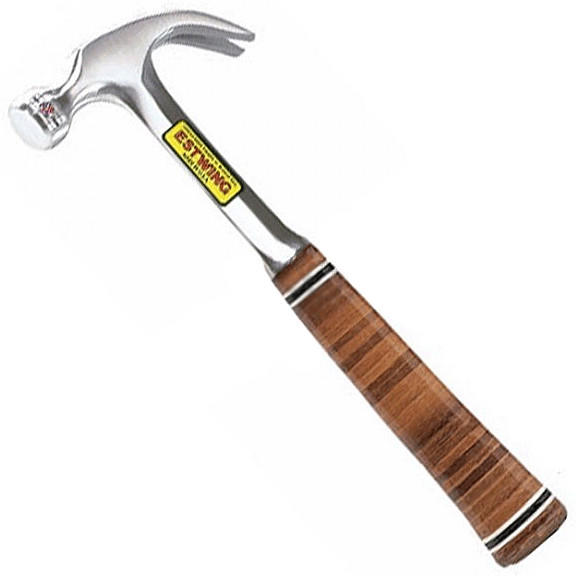
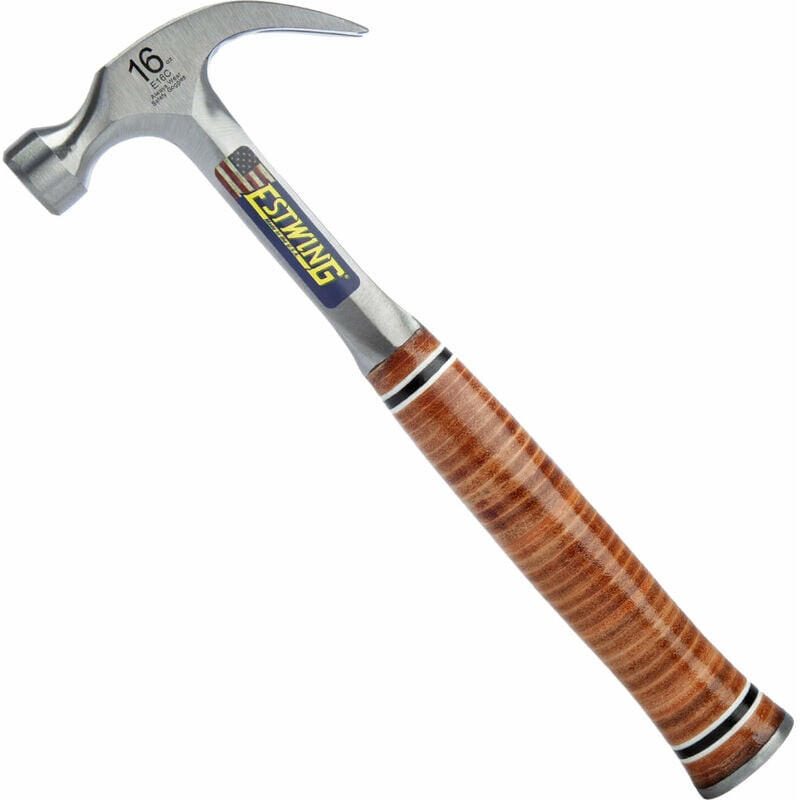


Multi-purpose design
A multi-purpose hammer is versatile and can be used for a wide range of tasks, making it a valuable addition to any toolbox. One example of such a multi-purpose hammer is the Stanley STHT51304 20oz Rip Claw Fiberglass Hammer. This hammer features a forged, one-piece steel construction for durability and a fiberglass handle for increased strength and durability. It also includes a rip claw design for pulling nails and a magnetic nail starter for easy one-handed nail placement. With its versatile design, this hammer is suitable for various projects, from framing to finish work.
Another example of a multi-purpose hammer is the Estwing Hammer - 24 oz Straight Rip Claw with Smooth Face. This hammer is made from solid steel construction, making it strong and durable. It features a straight rip claw design for pulling nails and a smooth face for accurate striking. The hammer also includes Estwing's Shock Reduction Grip which reduces vibration, providing comfort and control during use. With its multi-purpose design and ergonomic features, this hammer is suitable for both professional and DIY use.
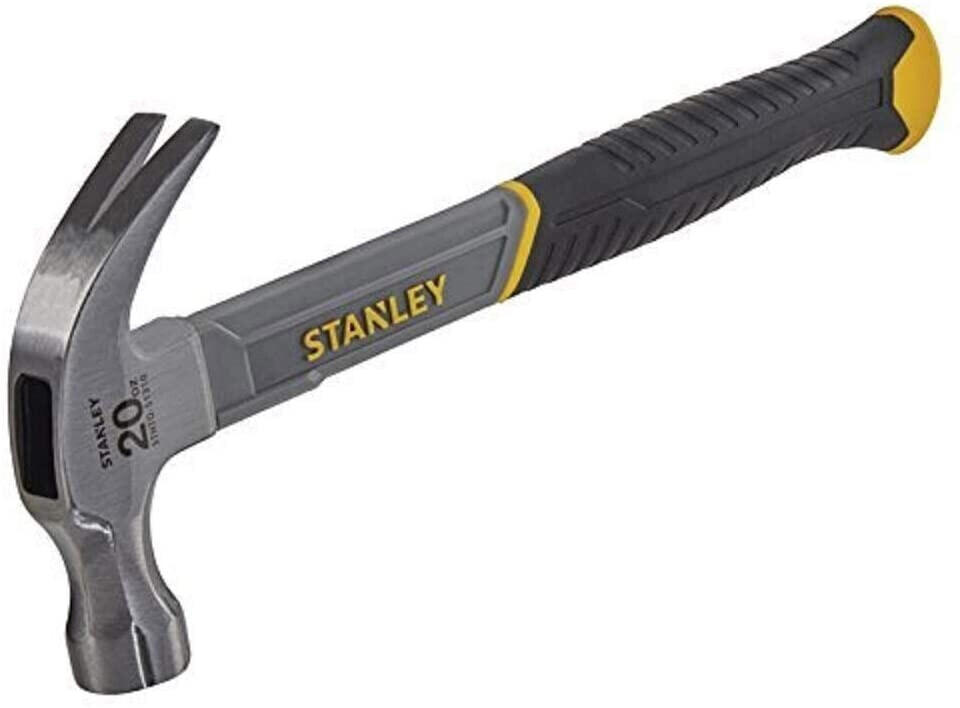
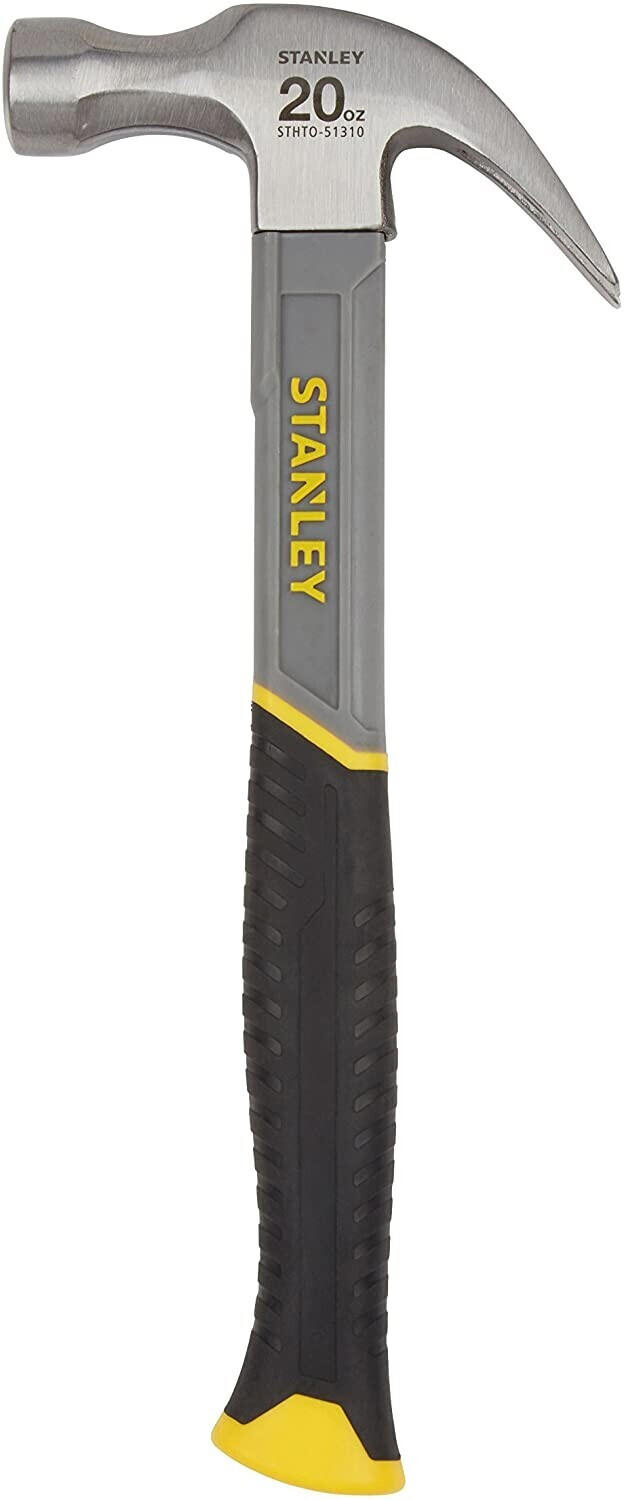
These examples demonstrate the qualities of a multi-purpose hammer, highlighting their versatility and durability. Depending on the specific task at hand, certain features and specifications may be more important to consider when choosing a hammer. By considering the multi-purpose design, you can select a hammer that will meet your needs and provide value for your investment.
Budget-friendly options
One such option is the 'Stanley 51-167 22-Ounce FatMax Xtreme AntiVibe Rip Claw Nailing Hammer', which features a patented torsion control grip to reduce vibrations and provide better control. It also has a traditional rip claw design for versatile use in various construction and renovation tasks. Similarly, the 'Estwing AL-Pro Hammer' offers a budget-friendly choice with a durable aluminum construction that provides strength without the added weight. With its patented EndCap design and shock reduction grip, this hammer ensures a comfortable and vibration-free experience during use. These options are great for DIY enthusiasts and professionals who are seeking affordable hammers without compromising on quality and performance.
Price
The price of a hammer can vary greatly depending on its type, brand, and quality. If you're looking for a budget-friendly option, the Stanley STHT51304 20oz Rip Claw Fiberglass Hammer is an excellent choice. This hammer offers great value for the price, featuring a fiberglass handle that provides durability and reduces vibration. Another option is the Estwing E3-16S 16oz Straight Claw Hammer, which is known for its affordability and high-quality construction. This hammer is made from one piece of solid steel, minimizing the risk of the head separating from the handle. For those looking for a premium option, the Stiletto TB15MC 15oz TiBone Titanium Milled-Face Hammer might be worth the investment. With its titanium construction, readable on-spec weight, and ergonomic grip, this hammer is lightweight yet offers unbeatable strength and longevity. No matter your budget, there are hammers available to suit your needs.

Variety of brands
Each brand offers its unique pros and cons, which can greatly affect the performance and durability of the hammers. One popular brand is Estwing, known for its high-quality hammers made from solid steel and a one-piece design, ensuring durability and reducing handle vibration. Another brand to consider is Stanley, which offers a wide range of hammers suitable for various tasks such as framing, woodworking, and general use. One of their notable products is the Stanley FatMax Xtreme Anti-Vibe Rip Claw Hammer, featuring an anti-vibration designed handle to reduce fatigue and a tempered steel head for enhanced strength. Tekton is another brand that offers reliable hammers at an affordable price, such as their Tekton Fiberglass Handle Claw Hammer that combines durability, ergonomics, and affordability in one package. These brands provide a diverse range of options for customers to choose from, catering to different budgets and specific needs.